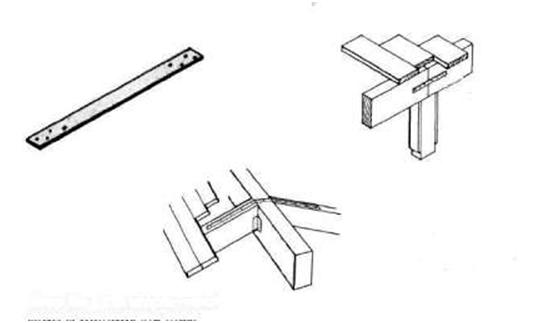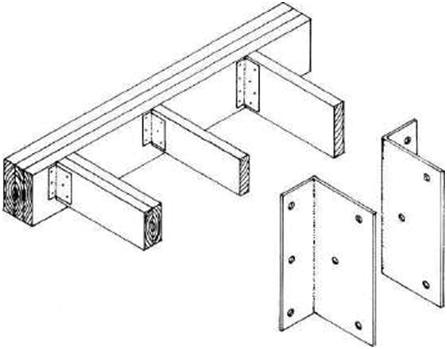| Metal Fastenings Illustrated on these two pages is a variety of manufactured metal devices, these developed by Teco (5530 Wisconsin Ave., Washington, D.C. 20015). Such fasteners often simplify construction, save time, and in some cases save on materials. For instance, by using joist hangers rather than nailing the joists to the top of the plates, the total height of the wall will be reduced by the width of the plate. Other devices can provide supplementary or additional strength in joining rafters to plates or in tying across the ridge pole. |
||||
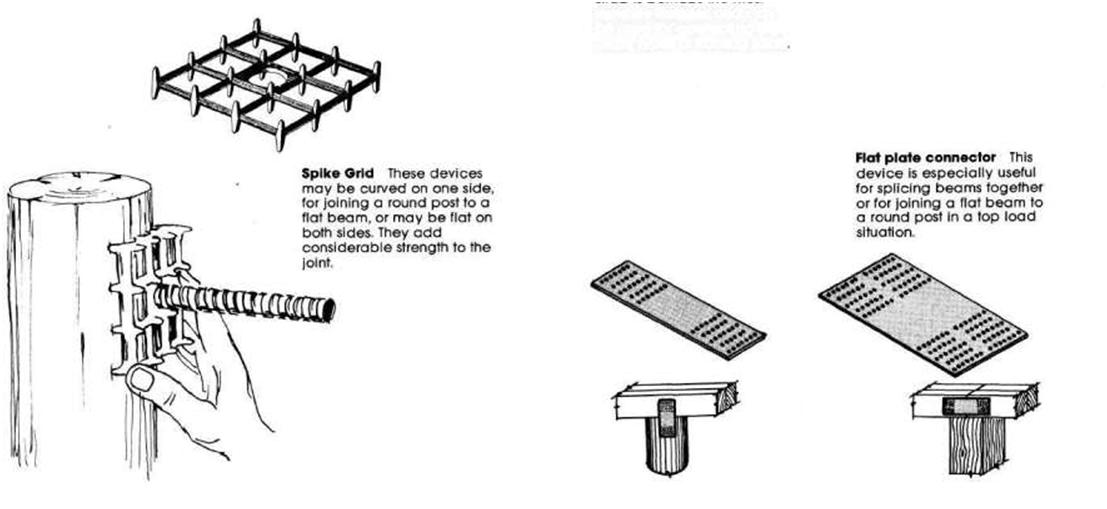 |
Strap Tie This simple metal strap is perhaps the most versatile fastener and may be used for connecting many types of framing joints |
|||
| Metal Fastenings | ||||||||||||||
| Rafter Anchor These are used to anchor the building’s rafters to the wall studs and also have application as tie-down devices.
|
 |
 |
||||||||||||
| Joist and Beam Anchor This is a specialized anchor which is available in sizes to fit most dimensions of lumber. | 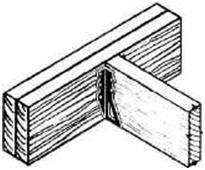 |
|||||||||||||
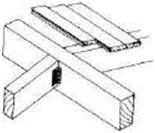 |
Angles These fasteners come in many variations and are very handy tor joining rafters to beams and also for attaching plates and rafters to the ridge. |  |
Anchor This is a variation of the Ail-Purpose Framing anchor, and might be used in attaching floor joists (as shown) to sills. | |||||||||||
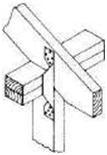 |
||||||||||||||
| Triple Grip Framing Anchor This device is used in the same applications as the All-Purpose Framing Anchor, but it provides one additional nailing surface. | 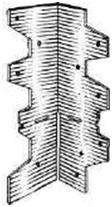 |
 |
 |
|||||||||||
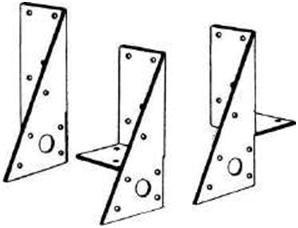 |
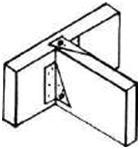 |
 |
||||||||||||
| All-Purpose Framing AnchorThis fastener, like the Strap Tie, may be used in a number of applications, such as attaching joists to plates and roof trusses to plates. | ||||||||||||||
| Plywood Supports These fasteners are especially time-saving for leveling plywood. Their use eliminates the need tor blocking at the joints. | 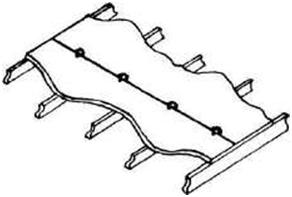 |
Framing Anchor These fasteners are used primarily for tying rafters to plates, but can be used to anchor many other types of connections. | 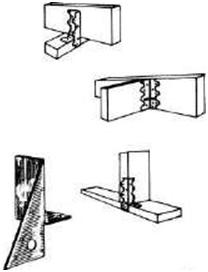 |
|||||||||||
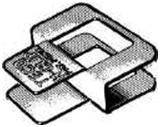 |
||||||||||||||
| Metal Fastenings | ||||
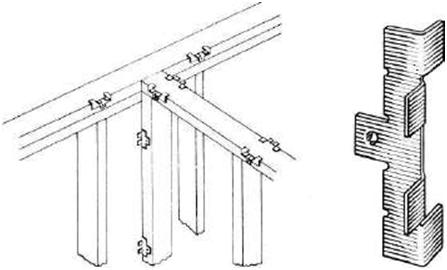 |
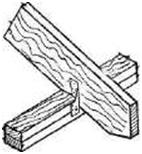 |
Dual Clip Framing AnchorThis fastener is similar to several other framing anchors but should be used for light loads and for shorter spans. | ||
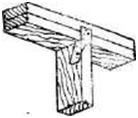 |
||||
| Backup Clip In a similar way to the Supports this device provides a support for dry wall construction or paneling at the wall corners and ceiling joints. | 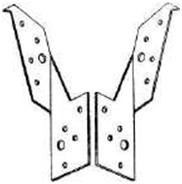 |
|||

